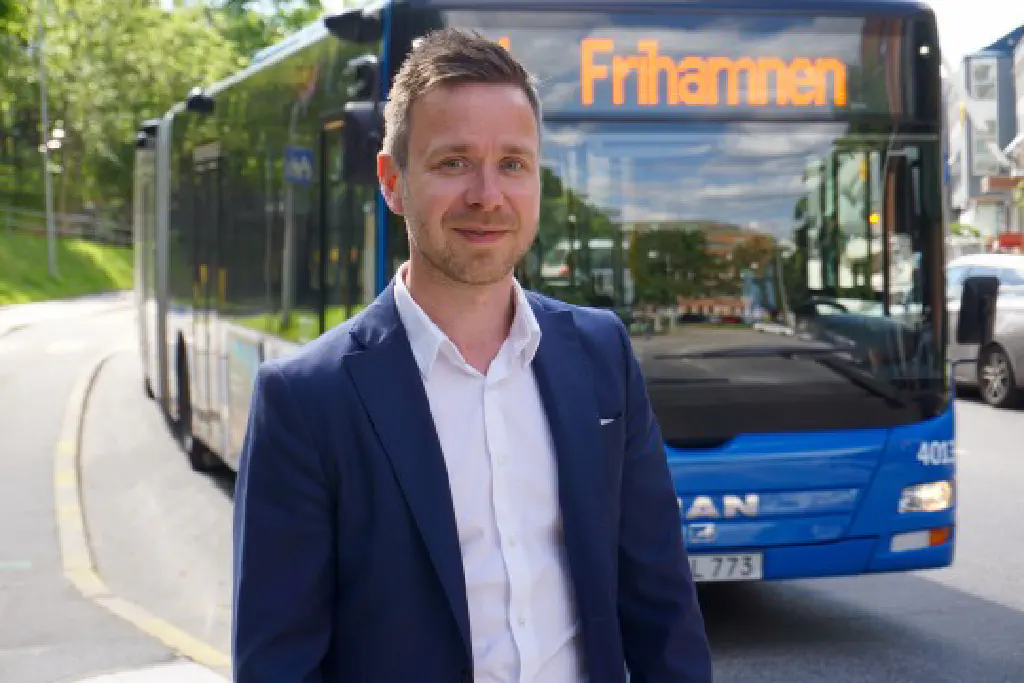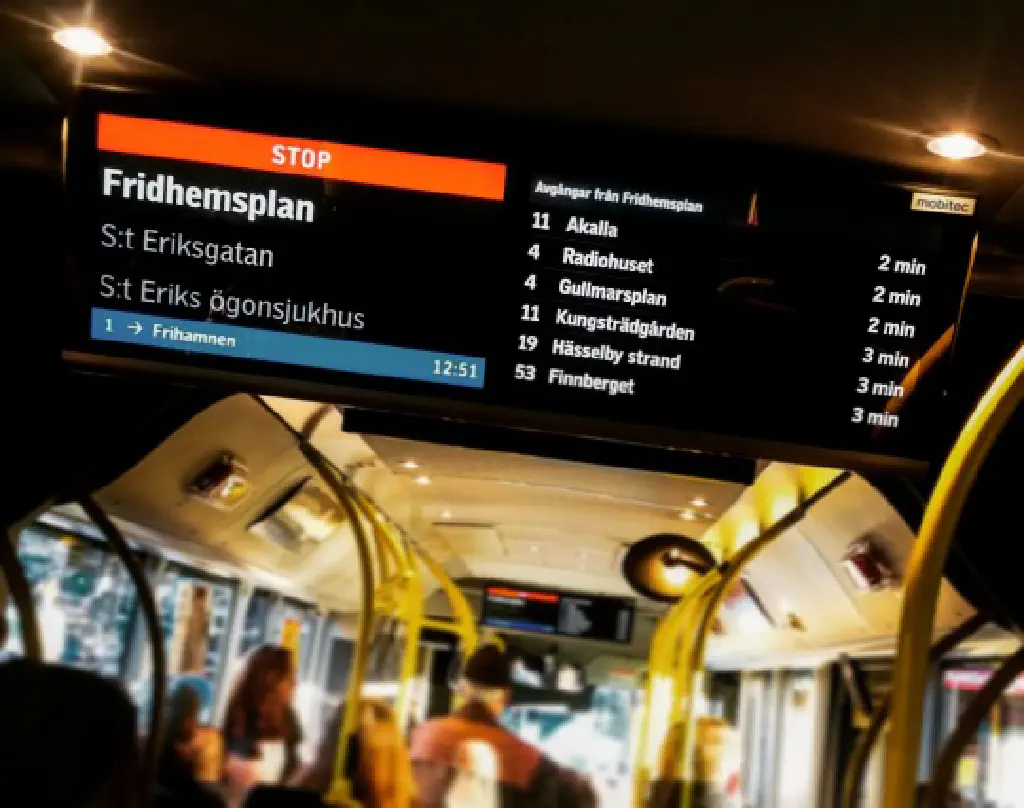Keoscreens
Since a year ago, travellers in Stockholm’s city centre have been able to get real-time traffic information directly on screens on board the blue buses with the KeoScreens service. For example, they can see upcoming stops, possible changes and how many minutes it is to the change. The result is more satisfied travellers - as many as 95% say the screens make their journey easier.
KeoScreens is the brainchild of the operator Keolis, which came up with the idea three years ago when it submitted a tender for Stockholm’s inner city bus services.
We wanted to do something that stood out in the procurement. And we knew from countless surveys that travellers always want better and more up-to-date information during their journey, especially in the event of disruption. So we invested in a new digital service for passenger information," says Otto Dyberg, IT manager at Keolis.
The strategy was successful and Keolis won the contract in early 2014. The development of the KeoScreens service started immediately in cooperation with the suppliers Hogia PTS and Mobitec and with the traffic administration of Stockholm as the client. The project involved both ensuring the installation of the screens on board the buses directly in the vehicle supplier’s factory and developing a stable system for fault and real-time data.
 Otto Dyberg, IT-chef på Keolis
Otto Dyberg, IT-chef på KeolisMisleading traffic information is perhaps even more annoying than no information at all, so accurate and qualitative real-time data has been a prerequisite for the project. Then we wanted to show how the traffic moves in reality, not the static timetable information, which made the project complex, says Otto Dyberg.
After a year of development, KeoScreens was launched in stages on the blue inner-city buses, which are used by nearly one million passengers every week. And it didn’t take long for passengers to embrace the service. A follow-up customer survey in autumn 2015 showed that 95% of passengers follow the information on the screens and think it makes their journey easier.
The aim has been to simplify and give travellers peace of mind, and we seem to have succeeded. One explanation for why the service is popular is that we have allowed real-time traffic and disruption information to take centre stage. This type of information is very useful for travellers, Otto says.
KeoScreen uses SL’s disruption and real-time data from all operators and traffic types via Trafiklab’s API.
The open data has been important to be able to realise the project quickly, even if as a larger company we could have done it anyway but at a higher cost. Going forward, innovation that drives travel will also be more important in transport procurement. For example, we talk a lot about digital services that make all types of transport accessible to travellers. Open data an important component for that development, says Otto.
In addition to KeoScreens being used on the blue buses in Stockholm, the solution has also been tested during the spring of 2016 by Västtrafik.
 KeoScreens ombord på de blåa innerstadsbussarna i Stockholm.
KeoScreens ombord på de blåa innerstadsbussarna i Stockholm.FACTS ABOUT KEOSCREENS
Launch date: 2015
Type of service: Digital screens on board the bus with real-time information, such as upcoming stops, changes at upcoming stops and the number of minutes left until the next departure. Disturbance information is also displayed.
Data from Trafiklab: Trafiklabs API for realtime and service alerts, SL Real time and SL Service alerts
User count: Hundreds of thousands of Stockholmers ride the blue inner-city buses in Stockholm every week.